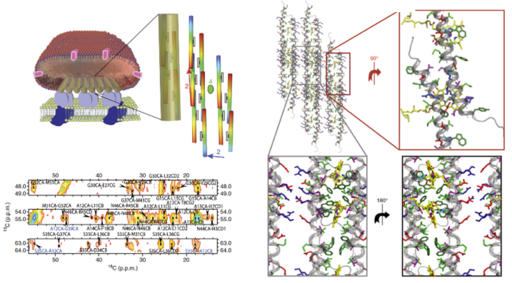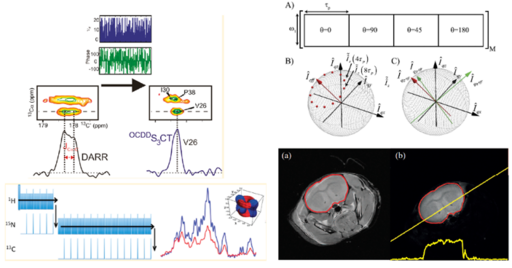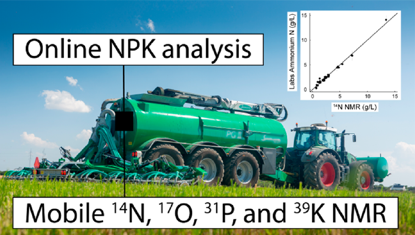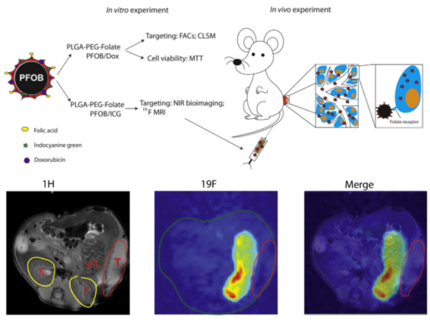We have a variety of ongoing research projects, of which those described below just represent examples. We hope you find those interesting and want to join our research – but with focus on method development and applications, we are open for any good idea on projects where NMR, MRI, or DNP can be useful.
All projects are part of the activities of the Danish National Center for Ultrahigh-Field NMR spectroscopy which we are hosting.

Atomic resolution information of structure and dynamics of biological macromolecules is of vital importance for the understanding of molecular function, and for designing medication intervening with or preventing disease states. While X-ray diffraction, Cryo-EM, liquid-state NMR are major workhorses for such studies they are restricted to samples that are either crystalline (XRD), ordered in two dimensions (cryo-EM), or in solution (liquid-state NMR). This does not by far apply for all interesting proteins, and it may not be the state optimal for analysis. Here solid-state NMR is a rapidly emerging method, where the combination of very high-field instrumentation and ultrafast sample spinning opens the way for high-resolution and sensitive data from which structures can be determined.
We are developing such techniques and applying them in collaboration other research groups with focus on, e.g., membrane proteins, amyloid fibrils (of relevance for dementia), and protein complexes (e.g., photoreceptors, which may be used for solar cells).

Using average Hamiltonian theory and optimal control theory, with the latter known form engineering and economics, we design advanced experiments in magnetic resonance. These may be designed to provide highest possible sensitivity and resolution, while focusing on accurate measurement of internuclear distances (important molecular structure information), dynamics, select certain molecular/atomic components over others (e.g. in catalysis), or improve information content in MRI images. The powder of these methods, as implementing in our global leading numerical simulation package SIMPSON, is that they are easy to use, and will allow design of experiment for optimal performance for a given challenge given from chemistry, medicinal chemistry, materials science, nanoscience, molecular biology, medicine.
We have a variety of ongoing projects in this area.
We are currently starting new projects in the area of electron paramagnetic resonance (EPR) and dynamical nuclear polarization (DNP) enhanced NMR spectroscopy. The rationale is that electrons have a much larger magnetic moment that nuclei, and thereby a sensitivity that is three orders of magnitude higher than nuclei, corresponding to six orders of magnitude faster experiments relative to NMR. We are currently, as supplement to already existing parahydrogen (use the polarization from parahydrogen) and dissolution (injects hyperpolarized molecules into the sample prior to NMR or MRI experiments) DNP, building EPR and DNP instrumentation for high-sensitivity studies of, e.g., catalysts.
We have a variety of projects currently under development in this area.

A central ingredient in society’s aim to follow UN’s sustainability goals is the ability to measure environmental or health parameters – from the philosophy if you can’t measure it, you can control it. This applies to biorefinery system, biogas plants, and agricultural distribution of phosphorous and nitrogen to avoid leaching to the environment, food products contents of protein, fat, and salts with relates directly to health a welfare. Low-field NMR is a very strong alternative to commonly used NIRS methods which is fast but, in many applications, provide less accurate results, and depends highly on large databases. NMR provides quantitative measurements of all constituents in the bulk samples (as opposed to surfaces for optimal methods) and can be adapted in laboratory and flow versions for continuous measurements.
We have several ongoing basic research projects with different partners on the use of low-field NMR in the areas “climate/environment”, food, and nutrition.

Solid-state NMR is a versatile tool to analyze essentially all kinds of molecular systems, ranging from inorganic materials nanomaterials including organic and/or inorganic components to drugs and small molecule intervening agents, to biological macromolecules. Common for all of these is that information beyond what is obtained via standard experimental protocols requires development of new experimental techniques. Examples on recent projects are ultrahigh-field MRI with enhanced contrast using functionalized nanoparticle, 19F-containing agents, or hyperpolarization.
We are open for projects, typically in collaboration with partners with expertise on the systems for investigation, which focus on development and application of new experimental methods in these areas.